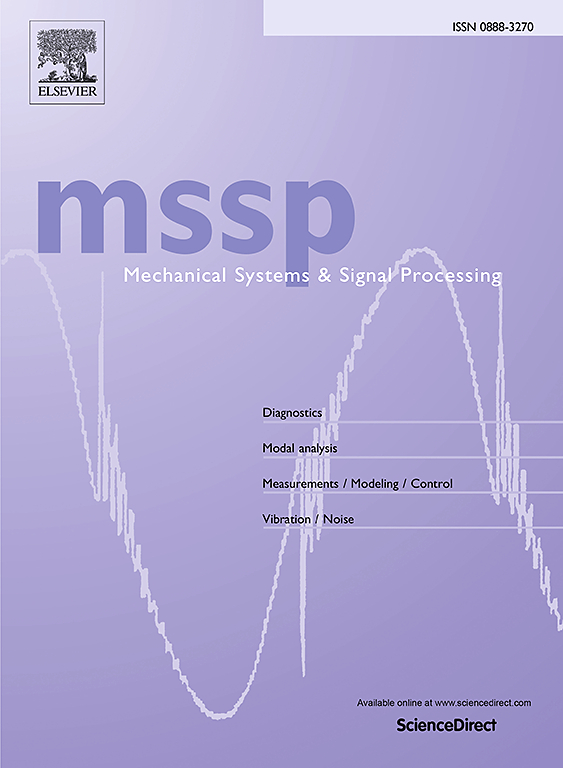Adaptive data-driven method for modeling of frequency-dependent multiport systems
IF 7.9
1区 工程技术
Q1 ENGINEERING, MECHANICAL
引用次数: 0
Abstract
Frequency-dependent dynamical systems are commonly encountered in engineering applications, such as automobiles, high-speed trains, and aircraft fuselages. The equations of motion for these systems do not follow the standard second-order form typical for regular elastic structures. The frequency-dependent characteristics complicate the frequency sweep analysis of the underlying model, and also make the application of traditional projection-based model order reduction techniques difficult or even ineffective. In this work, a data-driven approach based on the Loewner realization framework combined with tangential interpolation is applied to reduce the high computational cost of numerical simulations of structural acoustic systems with multiple terminals, incorporating representative damping treatments. The entire construction process does not require information about the system matrices of the original full-order model and knowledge of the complex material properties; only frequency samples and the associated transfer functions between a given number of inputs and outputs are needed. Afterwards, a low-dimensional reduced model in the classical second-order form without a damping term is generated. Additionally, a bi-fidelity error indicator with a masking function is developed to iteratively determine the location of error-peak frequencies used in the next step, and to further minimize the total number of sample data required for convergence. The structural dynamics with add-on viscoelastic damping, exterior acoustic scattering problems modeled by the boundary element method, interior pure acoustic as well as vibro-acoustic systems with porous sound-absorbing materials are all investigated to demonstrate the simplicity, versatility, and efficiency of the proposed approach. This provides a unified data-driven framework to ease the computational complexity of frequency sweep analysis of multiport frequency-dependent dynamical systems.
求助全文
约1分钟内获得全文
求助全文
来源期刊

Mechanical Systems and Signal Processing
工程技术-工程:机械
CiteScore
14.80
自引率
13.10%
发文量
1183
审稿时长
5.4 months
期刊介绍:
Journal Name: Mechanical Systems and Signal Processing (MSSP)
Interdisciplinary Focus:
Mechanical, Aerospace, and Civil Engineering
Purpose:Reporting scientific advancements of the highest quality
Arising from new techniques in sensing, instrumentation, signal processing, modelling, and control of dynamic systems
 求助内容:
求助内容: 应助结果提醒方式:
应助结果提醒方式:


